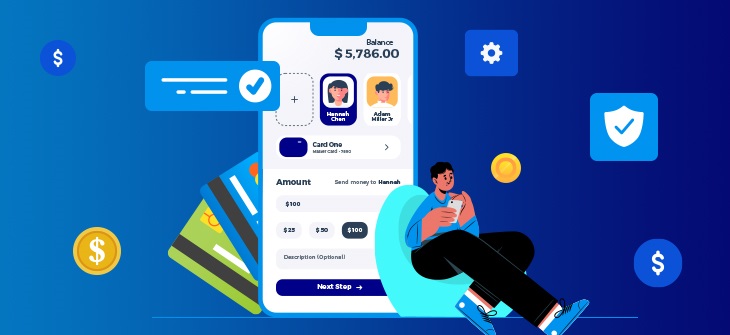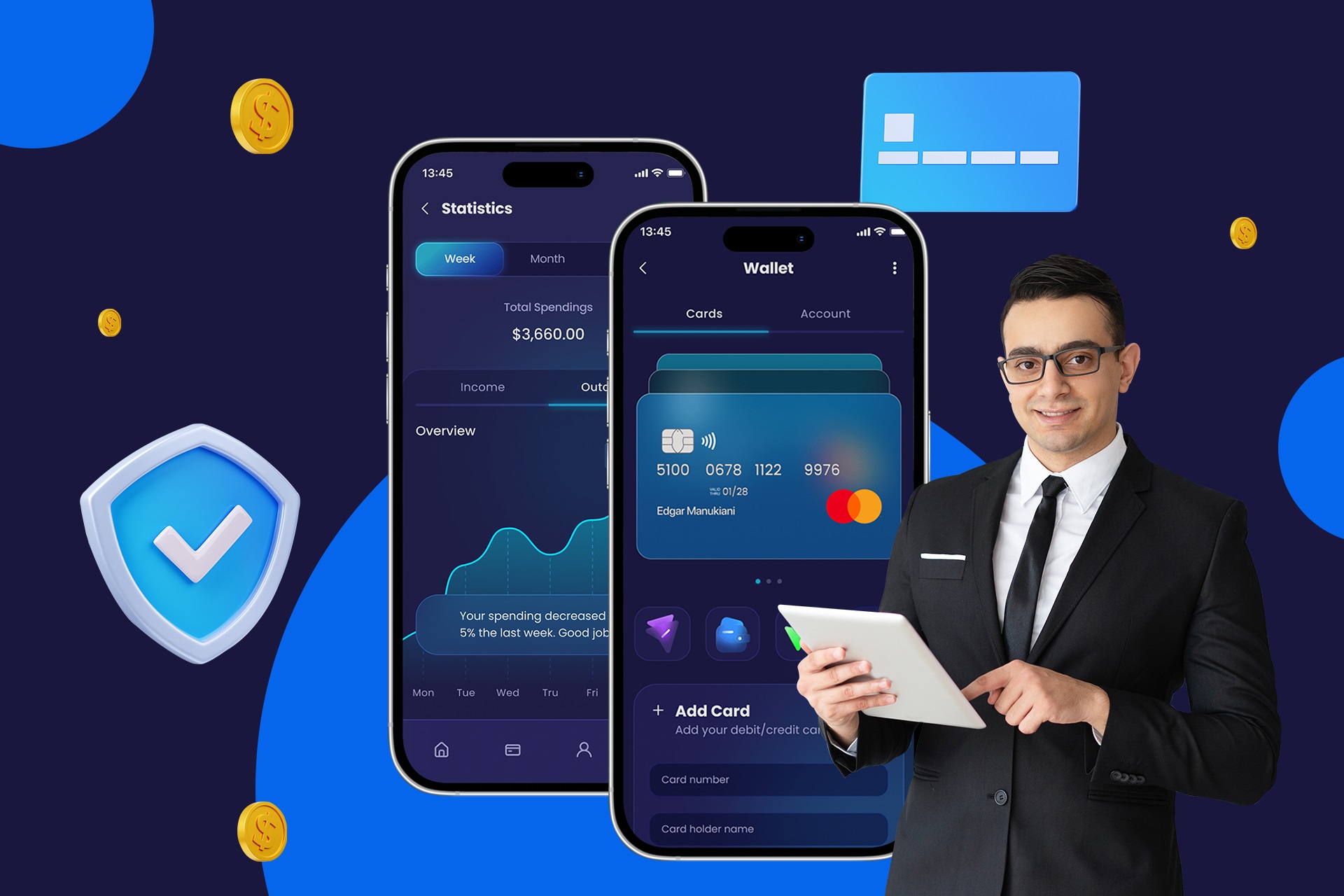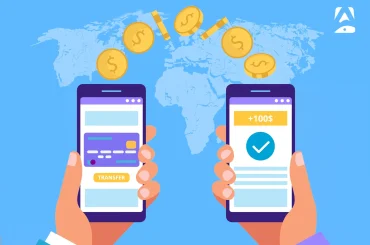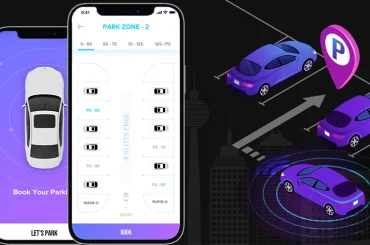Fintech, or financial technology, is the use of technology to create innovative financial products and services. Mobile app development, on the other hand, is the process of creating software applications that run on mobile devices such as smartphones and tablets. In recent years, the combination of fintech app development has become increasingly important in the financial industry, as more consumers prefer the convenience and accessibility of mobile apps for their financial transactions.
The purpose of this blog is to highlight the emerging trends in fintech mobile app development in 2023. Specifically, we will discuss the increased adoption of artificial intelligence and machine learning, the integration of augmented reality and virtual reality, the expansion of cryptocurrency and blockchain, and the increased emphasis on security and privacy in fintech mobile apps.
Increased Adoption of Artificial Intelligence (AI) and Machine Learning (ML) in Fintech Mobile Apps

Artificial intelligence and machine learning are computer systems that can learn and make decisions based on data inputs. In the context of fintech mobile apps, AI and ML can be used to analyze large amounts of data to provide personalized financial advice, detect fraud, and improve customer service.
Examples of how AI and ML are currently being used in fintech mobile apps include chatbots, robo-advisors, and credit risk assessment. Chatbots are automated messaging systems that can provide customer support and answer questions, while robo-advisors are automated investment platforms that can provide personalized investment advice based on a user’s financial goals and risk tolerance. Credit risk assessment, on the other hand, involves using machine learning algorithms to analyze a user’s credit history and other financial data to determine their creditworthiness.
Emerging trends in the use of AI and ML in fintech mobile app development include the integration of voice assistants such as Siri and Alexa, which can enable users to interact with their financial apps using voice commands. Another emerging trend is the use of AI and ML to provide more personalized and predictive financial advice, such as recommending savings goals or investment strategies based on a user’s spending habits.
Integration of Augmented Reality (AR) and Virtual Reality (VR) in Fintech Mobile Apps
Augmented reality and virtual reality are technologies that can create immersive and interactive experiences for users. In fintech mobile apps, AR and VR can be used to provide virtual financial advice, simulate investment scenarios, and create virtual shopping experiences.
Examples of how AR and VR are currently being used in fintech mobile apps include virtual reality investment simulations, which enable users to experience different investment scenarios in a simulated environment. Another example is augmented reality shopping experiences, which enable users to visualize how a particular product might look in their home or office before making a purchase.
Emerging trends in the use of AR and VR in fintech mobile app development include the integration of virtual financial advisors, which can provide personalized financial advice and simulate investment scenarios in a more interactive and immersive way. Another emerging trend is the use of AR and VR to provide virtual banking experiences, which can enable users to conduct transactions and manage their finances in a more engaging and immersive way.
Expansion of Cryptocurrency and Blockchain in fintech app development
A cryptocurrency is a form of digital currency that works on cryptography techniques to protect transactions. It also helps to control the creation of new units. Blockchain is a decentralized digital ledger that records transactions transparently and securely. In fintech mobile apps, blockchain and cryptocurrency can be used to facilitate transparency and secure financial transactions.
Examples of how cryptocurrency and blockchain are currently being used in fintech mobile apps include peer-to-peer payments, which enable users to transfer funds directly to one another without the need for a third-party intermediary. Another example is cryptocurrency wallets, which enable users to store and manage their cryptocurrency holdings.
Emerging trends in the fintech app development
Examples of how cryptocurrency and blockchain are currently being used in fintech mobile apps include digital wallets for storing and transferring cryptocurrencies, decentralized finance (DeFi) apps for lending and borrowing cryptocurrencies, and blockchain-based identity verification systems for financial services.
Emerging trends in the use of cryptocurrency and blockchain in fintech mobile app development include:
Expansion of the DeFi ecosystem: DeFi is an emerging sector within the cryptocurrency and blockchain space, which aims to create a decentralized financial system that is open to everyone. In 2023, we expect to see more fintech mobile apps that leverage DeFi protocols to offer financial services such as lending, borrowing, and trading.
Increased adoption of stablecoins: Stablecoins are a type of cryptocurrency that is designed to maintain a stable value relative to another asset, such as the US dollar. This stability makes them an attractive option for use in everyday transactions, such as buying goods and services. In 2023, we can expect to see more fintech mobile apps that support stablecoins as a means of payment.
Integration of NFTs: Non-fungible tokens (NFTs) are unique digital assets that are verified on a blockchain. They are commonly used to represent ownership of digital art, collectibles, and other unique assets. In 2023, we can expect to see more fintech mobile apps that integrate NFTs into their platforms, enabling users to buy, sell, and trade these assets.
Increased Emphasis on Security and Privacy in Fintech Mobile Apps
As fintech mobile apps become more prevalent in our daily lives, there is a growing need for increased security and privacy measures. This is particularly important in the financial industry, where users’ personal and financial information is at risk of being compromised by cybercriminals.
Definition of security and privacy in fintech app development: Security refers to the measures taken to protect users’ data from unauthorized access, while privacy refers to the protection of users’ personal information, such as their name, address, and social security number.
Examples of how security and privacy are currently being addressed in fintech mobile apps include two-factor authentication, biometric authentication, and encryption of data in transit and at rest.
Emerging trends in the implementation of security and privacy in fintech mobile app development include:
Increased use of blockchain: Blockchain technology can help improve the security and privacy of fintech mobile apps by creating a decentralized network that is more difficult to hack or tamper with. This technology can also be used to enable users to control their data, giving them greater privacy and control over their personal information.
Improved biometric authentication: Biometric authentication, such as facial recognition and fingerprint scanning, can provide an additional layer of security for fintech mobile apps. In 2023, we can expect to see more fintech mobile apps that use biometric authentication as a means of access control.
Governments worldwide are implementing new privacy regulations, such as the European Union’s General Data Protection Regulation (GDPR) and the California Consumer Privacy Act (CCPA). In 2023, we can expect to see more fintech mobile apps that comply with these regulations and take steps to protect users’ privacy.
Conclusion
Cryptocurrency and blockchain are two of the most exciting and disruptive technologies in the world of fintech app development. Cryptocurrencies, such as Bitcoin and Ethereum, is a digital currency that uses encryption techniques to regulate the generation of units of currency and verify the transfer of funds. Blockchain, on the other hand, is a decentralized ledger that is used to record transactions across many computers, making it difficult to tamper with the data.





